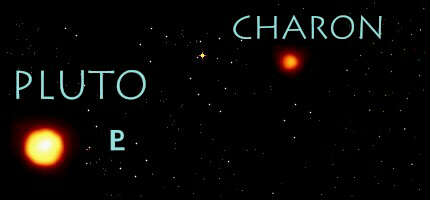|
|
|
 |
Pluto is the farthest planet from the Sun (usually) and the smallest. In Roman mythology, Pluto (Greek: Hades) is the god of the underworld Charon is Pluto's only known satellite. In Greek mythology Charon ferried the dead across the river Styx.
As the farthest planet known in our solar system, Pluto also has the most erratic orbit, at times placing it closer to us than Neptune. Pluto represents upheaval and transformation, deep-seated desires, obsessions, our inner depths that are unknown to even us, and the larger issues of life-death-rebirth and sex. Think of ‘Frozen Fire’, and you wll have a feel for Pluto. Its position shows where changes are going on and this can be very difficult. A sacrifice is called for so that something better may take its place.
As the higher octave of Mars, it is the modern ruler of Scorpio and deals with renewal, power, destruction, rebuilding, the underworld (after-death states). It can also represent criminal and covert organizations such as the Mafia or the CIA; that which is hidden but exerts a great influence.
Physically, Pluto rules the prostate gland, reproductive organs, allergies, insect bites, and the nape of the neck.
For colors, gemstones, and metals, Scorpio is associated with gold, deep yellow, bright red, orange, wine, and purple; the gem of topaz; and the metal of iron.
![]()
![]() Astronomical
data:
Astronomical
data:
Pluto could be called the oddball planet for a number of reasons. It's the only non-gaseous planet in the outer Solar System, it is the smallest of all the planets, it has the proportionally largest moon, and it travels around the Sun in a very strange orbit. Nobody expected Pluto to be as small as it is, much too small to have a gravitational effect on Uranus or Neptune - the reason for suspecting that there was a ninth planet in the first place. (interesting, eh?)
Pluto is only about 1,500 miles across - smaller than our moon. It's very eliptical orbit suggests to some astronomers that it is an ejected moon from Neptune or Uranus. Unlike the other planets that orbit beyond Mars (the gas giants), Pluto is small, with only a very thin atmosphere, mostly of methane gas. For about 20 Earth-years out of each 248.5 year orbit, Pluto is closer to the Sun than Neptune is. Pluto is in this part of its orbit between 1980 and 1999. The physical conditions on Pluto make it almost impossible for human exploration. Pluto is some 4 billion miles from the Sun, so solar radiation has little heating effect and the surface temperature approaches -350 degrees F. The surface is also covered with ice, part of which evaporates when Pluto is at perihelion (nearest to the Sun) once every 250 years. It passed perihelion in 1989.
The single moon of Pluto, named Charon, was discovered in 1978 by James Christy at the U.S. Naval Observatory. It is the largest moon in the Solar System when compared with the planet it orbits - about half the size of Pluto. Like Pluto, Charon may also have a thin atmosphere, but its composition has not yet been determined. Charon's orbital period is equal to Pluto's rotation period, so the length of a plutonic day and month are the same. Because of this, if a person on Pluto stood directly under Charon, the satellite would appear to remain stationary, forever hanging over that spot. Conversely, a person on the diametrically opposite side of Pluto would never see the satellite at all! Pluto's surface is covered with methane ice, while Charon's is covered with water ice.
[Sun] [Moon] [Mercury] [Venus] [Mars]
[Jupiter] [Saturn] [Uranus] [Neptune] [Pluto]
*Astrological Backgrounds Menu*
![]()